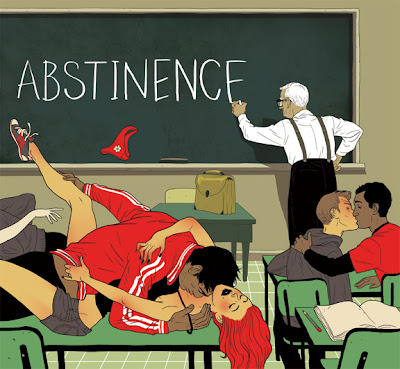#abstinence

put me together and break me more. still here
resocialization.

We each bring our individual sparkle to video gatherings. So, make a commitment to let your advocacy shine during Zooms with friends and family! Support the movement for bodily autonomy by illuminating your next video chat with insights about the state of sex education in America.
We know — starting a conversation with your family (or with anyone over video) can seem awkward. Don’t worry! We’ve got 8 tips to sail through the convo.
Tip #1: Get the conversation going in a way that’s welcoming.
If you’re at a virtual hangout, share how important education is to you. Encourage each person to share the topic they believe is essential for young people to learn.
When the time is right, say something like: “For me, sex education is one of the most important forms of education a young person can have today.”
Tip #2: Take Time for Q&A
Ask the adults:
- “What do you remember about your own sex education?”
- “If you received sex education, what would have made it more helpful?
- “If you have kids, how would you like sex education to be taught to them?”
Ask any young people on the call: “Do you have thoughts about or experiences with sex education that you feel comfortable sharing?”
Ask everyone: “Would you like to hear some facts about sex education and where we are as a country with it?” If people seem engaged, then move to Tip #3.
Tip #3: Explain what sex education is and why it’s important to talk about.
Sex education is more than just putting condoms on bananas. It’s even beyond sexually transmitted infection (STI) prevention and avoiding unintended pregnancy! Sex education is a foundation for our development as people.
Sex education helps young people make healthy decisions about their bodies, relationships, and how they express their gender and sexuality — without fear or shame.
Sex education covers a wide range of age-appropriate topics, such as:
- Physical dimensions of sexuality, like puberty, pregnancy, and STIs
- Emotional dimensions of sexuality, such as feelings of connection and self-esteem
- Identity and sense of self, including gender identity and personal values
- Healthy relationships, including platonic relationships, intimate relationships, and dating
- Communicating boundaries, including both listening and speaking up
Tip #4: Drop some knowledge about the benefits of and public support for sex education in America.
The benefits: Sex education is proven to increase safer sex and help young people prevent unintended pregnancy. It’s also linked to reducing transphobia,homophobia, and sexual assault.
The support: Public opinion overwhelmingly supports sex education across geographic and political lines. Among parents of middle and high school students, over 80% believe sex education is important for middle schoolers, and 98% believe it’s important for high schoolers.
The problem: Too few young people get the sex education they need and deserve.
Tip #5: Explain what’s getting in the way of sex education at the state level.
Almost every state has some guidance on how and when sex education should be taught, but decisions are often left up to individual school districts.
That means state and local politicians decide whether or not educators can discuss birth control; how educators can talk about LGBTQ+ experiences (if at all); and how much educators must stress abstinence until marriage.
Only 30 states and the District of Columbia mandate sex education. But just because a state mandates sex education doesn’t mean that it’s good or comprehensive! Of the states that mandate sex education, very few have high-quality standards:
- Only 20 states and DC require information about contraception.
- Just 17 states require what’s taught to be medically accurate.
- Merely 11 states require sex education to have LGBTQ+ content and inclusive language.
Tip #6: Explain the problems with abstinence-only-until-marriage programs.
Abstinence-only programs:
- Focus on deterring students from having sex, often by scare tactics and withholding information
- Often blame survivors for their own sexual assaults and ignore the needs of LGBTQ+ teens
- Leave a population of sexually active people uninformed and vulnerable
Studies show that abstinence-only programs are ineffective — they don’t decrease STI or unintended pregnancy rates.
Studies also show that abstinence-only programs are harmful — they reinforce damaging gender stereotypes, stigmatize or exclude gender nonconforming people, and violate a basic human right of young people to access accurate health information.
Despite all this, Congress poured $2.1 billion taxpayer dollars into abstinence-only-until-marriage programs between 1996 and 2018.
Tip #7: Say what people can do to help.
Encourage your friends and family to share local and national news about sex education on social media, along with what they may have learned in this conversation.
You can also encourage people to contact their members of Congress and advocate for sex education, such as by:
- Ending federal funding for programs that promote abstinence-only-until-marriage, gender stereotypes, and medically inaccurate information
- Supporting initiatives that promote sex education and access to sexual health services for young people — like the Teen Pregnancy Prevention Program, the Personal Responsibility Education Program, and the Real Education for Healthy Youth Act
Tip #8: Thank everyone for having the conversation with you.
Express heartfelt gratitude for each person who joined in the conversation, and any person who just listened.
Whether the conversation was challenging or a breeze, remember this: It could be a gateway to other meaningful interactions about issues you care about.
Pat yourself on the back for taking this big step!
“Wherever on earth the religious neurosis has appeared we find it tied to three dangerous dietary demands: solitude, fasting, and sexual abstinence.”
—F. Nietzsche, Beyond Good and Evil, §47 (excerpt).
“Life is the one great indulgence; death the one great abstinence.”
~ LaVey, Satanic bible
Wow, you really made it! You just finished 40 days of abstinence. I could have never done it, I am really impressed! You must be dying to cum *giggles*!
Hey, let’s do something crazy! You still wear the chastity cage, right? I dare you to hand me the key! You heard me! We’ve been friends for years now. I just want to know how it feels to wield such power over another person. Don’t you trust me? What could go wrong?
[Reblog if you would agree to such a dare!]
Post link
Cum abstinence day 15
I simply can’t go on like this! I walk around the Vietnamese streets with erected bones, I see a lot of young girls’ feet here and my erection become bigger and bigger, and I feel I can cum in any moment! I took a private bus this morning and I sit down next to a young Spanish girl who took her sandals off and remained barefeet. I couldn’t stop watching her feet with a burning desire of put them on my face and kiss them! I’m afraid of cumming when I can’t and stain my pants! In the afternoon I’ll do a body massage and I think I’ll cum even of the masseuse not touch my penis or my testicles.
News later.



